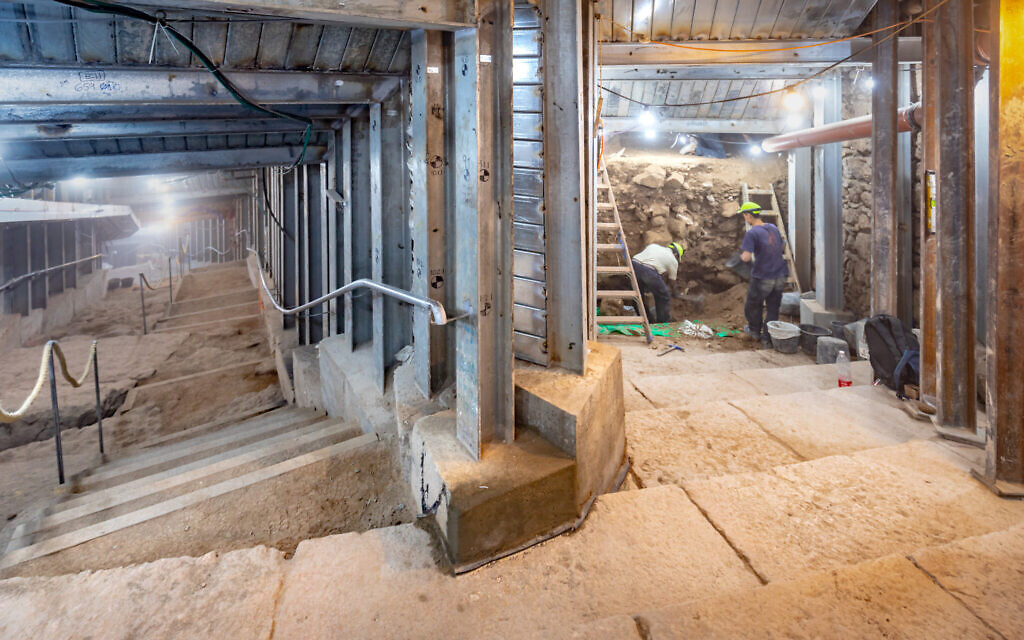Culture
City of David archaeologists say 2,000-year-old central Jerusalem market found
A rare
In conversation with The Times of Israel on Monday, Levy said the stone table would have belonged to the market’s manager, or agoranomos, who was in charge of the weights and measures of commodities traded in the shuk.
The measuring table was found in a broad paved central square still undergoing excavation, alongside dozens of stone measurement weights. The sum of the parts has led the IAA archaeologists to conclude that this area of the
“The volume standard table we’ve found, as well as the stone weights discovered nearby, support the theory that this was the site of vast trade activity, and perhaps this may indicate the existence of a market,” said Levy in a press release.
Today, the path is five meters (16 feet) under ground. Archaeologists and historians call the road that is being excavated under an East Jerusalem Arab neighborhood the “
It was built starting in 20 CE by the Romans and completed under the governance of Pontius Pilate in about 30 CE. A recent study of 100 coins collected under pavement at the site appears to confirm this dating.
But the Romans, in destroying
Only two other such measuring tables have been discovered in

The fact that the measuring table is made of stone has nothing to do with
Preliminary research into the table is being conducted by archaeologist Prof. Ronny Reich, an expert in ancient
Describing the piece of the stone table top, Reich said in the press release, “We see two of the deep cavities remain, each with a drain at its bottom. The drain at the bottom could be plugged with a finger, filled with a liquid of some type, and once the finger was removed, the liquid could be drained into a container, therefore determining the volume of the container, using the measurement table as a uniform guideline. This way, traders could calibrate their measuring instruments using a uniform standard.”
Stories for you more +